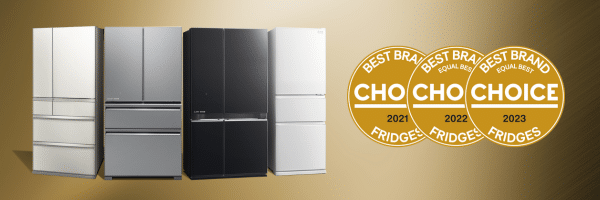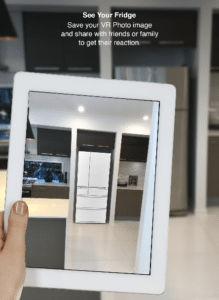The Best Brand awards by CHOICE are given to the top-performing brands based on their reliability, customer satisfaction, and overall performance. CHOICE experts rate over 50 popular fridge models based on various criteria, including food freshness, temperature stability, 10-year running costs, and reliability. Mitsubishi Electric has been rated the best performer for three consecutive years – 2021, 2022, and 2023.
Our award-winning refrigerators are designed with the end user in mind. Multi-drawer, French door, Top Mount or Bottom Mount freezer models are available in a variety of designs and capacities to suit your kitchen’s needs.
How to choose your next fridge
Buying a new fridge is a significant and exciting investment for your home, and it is essential you make the right purchasing decision. If you are in the market for a new fridge, arm yourself with the knowledge necessary to make a good choice.
Our ‘Ultimate Fridge Buying Guide – How to make the right choice‘ gives you all the knowledge you need to choose your next fridge. This includes advice on selecting the best fridge size and design for your needs, energy efficiency, and which features suit your lifestyle. Be sure to give it a read before venturing into your nearest retailer or online.
Finding a fridge to fit your space
To make the selection process easier, Mitsubishi Electric developed the ‘Fridge Finder’ app. The app will offer you a list of Mitsubishi Electric refrigerator models that will fit in your space by simply entering the width and height of your cavity. You can even photograph your kitchen to see how different models will look. The Fridge Finder app makes finding a fridge to fit your space much more straightforward.
You can download the Fridge Finder app from the App Store to see how your next fridge might look in your kitchen.
Moving your fridge
Once you have made a decision on which fridge to purchase and it has been delivered to your home, the next important step is to move it inside carefully. You can find all the necessary tips and guidance at ‘Fridge Moving Made Easy’, where we have covered the top 10 frequently asked questions to make installation stress-free.





